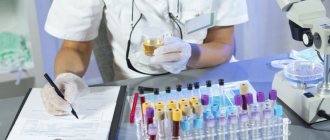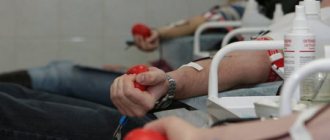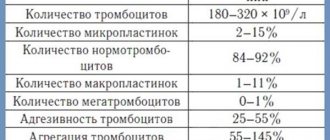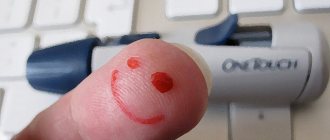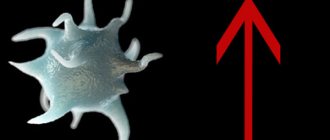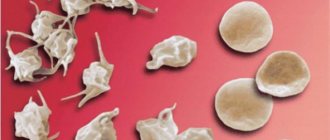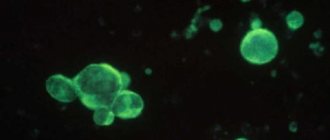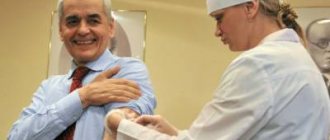The procedure for a donor to donate platelets for medical purposes is called thrombocytopheresis. You can donate them voluntarily by visiting a blood donation station or making an appointment by phone. The components obtained as a result of donation by a donor can help save a human life. They go to help people suffering from cancer or hematological diseases.
The components that protect the human body from possible injuries and bleeding are called platelets. When a vessel is damaged, a protective biological component is formed - a blood clot. It is necessary to create an obstacle to blood loss for victims. Plateletpheresis may be prescribed to reduce high levels of platelets in the blood. This procedure is prescribed to reduce the likelihood of blood clots. If necessary, the doctor prescribes a blood test for the patient. Medicines and blood substitutes are made from the platelet mass obtained as a result of donation by a donor.
How do donors donate platelets?
At the registration desk, the donor is offered a questionnaire to fill out. In it you need to indicate your passport details, address of actual residence, telephone number, past illnesses. A donor card is created for the newly arrived person. After this, the future donor will be given his card for donating blood from a finger. Based on the results of a blood test, hemoglobin levels, group, and platelet counts are determined. Next, with the results obtained, the donor undergoes examinations by a transfusiologist. They measure his weight, height, blood pressure, pulse, and inquire about the general well-being of the donor.
Once examined by a transfusiologist, the donor is allowed to donate platelets.
The procedure has two ways:
- intermittent;
- hardware;
How donors donate platelets: instructions
In the intermittent method, blood is taken from the donor and the platelets are separated from it. This procedure uses a centrifuge. After the platelet collection procedure is completed, the donor’s blood is returned. The time it takes for the procedure depends on how quickly the required number of blood platelets is collected. This indicator is influenced by the total weight of the donor. This method is not widely used due to its complexity and duration.
In the second, special devices are used. They create a continuous flow of blood. This leads to the fact that a nurse or doctor can monitor the speed of donation and the well-being of the donor. Sterility is ensured due to the lack of contact during operation of the mechanism.
Having passed the necessary tests and received the doctor’s permission, the donor:
- Drinks hot, sweet tea with cookies, sometimes chocolate is available;
- On call, occupies an empty chair for donation;
Donation procedure:
- A completely sterile needle is inserted into the donor's vein by a nurse;
- The nurse enters the necessary parameters into the sampling machine. The device starts working in automatic mode;
- The donor clenches and unclenches his fist to create pressure and improve platelet collection;
Modern devices operate automatically. When donating, they use a sound signal to tell the donor when to release his fist and not work with it, and when to start squeezing and unclenching it. The procedure itself takes from forty-five minutes to an hour. After donating platelets, the donor is given a form to receive free social assistance.
How to become a blood donor
Have you decided to become a donor? It's great, necessary and safe! Many donors who donate blood for the first time are faced with a number of questions that interest them regarding the blood donation procedure. To help you correctly understand the essence of the upcoming procedure, we have prepared for you a list of questions that donors are most often interested in.
Question. What are blood components?
Answer. Blood consists of several components. Red cells are red blood cells, white cells are white blood cells and platelets, and the liquid part of the blood is plasma. Currently, all donor blood is separated into components using machines or a centrifuge. Treatment of patients using components is much more effective than using whole blood.
Q. Why can’t you eat dairy, spicy, salty or fatty foods before the procedure?
A. After eating, the composition of the blood changes. Tiny fat droplets called chylomicrons form in the vessels. They can disrupt the normal course of the procedure and even make it impossible. In addition, such blood can cause negative reactions in patients during transfusion.
Q. Why drink water before the procedure?
A. Before the procedure, it is advisable to drink liquids (tea, juice, mineral water), because this increases blood volume. The more blood you have, the easier the procedure will be.
Q. What is the hardware platelet collection procedure? Isn't it harmful?
A. The platelet collection procedure is a method of separating blood into its components using separators, called plateletpheresis. In this case, platelets are separated from the donor's blood, and the remaining components are returned back to the donor. This procedure is used in many countries around the world and, according to numerous studies, is safe.
Q. How long will it take?
A. Hardware plateletpheresis lasts 1.5-2 hours.
Q. Can you get any infections by giving blood?
A. This is out of the question. Immediately before your visit to the operating room, an individual disposable sterile donor kit is charged into the device, which is disposed of after the procedure. All syringes and tubes are also disposable. Your blood circulates in a closed, sterile system and does not come into contact with air or any parts of the device.
Q. Why is my blood drawn into tubes during the procedure?
A. These are repeated tests for infections.
Q. Why are my height and weight data entered into the device’s memory?
A. This information is needed during the platelet collection procedure. Based on these parameters and analysis data, the device calculates the optimal blood flow for you and the volume of blood that will pass through the plastic system.
Q. Can I use a mobile phone during the procedure?
A. Yes, you just need to configure the settings of your mobile devices so that they do not distract you and other donors from the procedure. Use a headset with an auto-answer function and turn up the volume on your headphones so that you can easily hear the department staff.
Q. What's that yellow thing in the bag?
A. During the procedure, the device prepares plasma as a nutrient medium for platelets. It is the plasma that is collected in a bag outside the device. The platelets are kept in a small chamber throughout the procedure and are removed after the collection process is completed.
Please do not touch bags, plastic tubes or any parts of the machine! This may disrupt the normal course of the procedure.
Q. Last time I had two needles in the system and, accordingly, both hands were busy, but this time the system is single-needle. Why?
A. It depends on the type of system being charged into the device. On a two-needle system, filling and returning blood occurs continuously, and on a single-needle system, the filling and returning cycles replace each other. This procedure lasts 30-40 minutes longer. Therefore, if you have good veins on both arms, it is more practical to choose a double-needle system.
Q. Why are calcium injections needed during the procedure?
A. The device takes some of the Ca++ ions from the blood - this is necessary to prevent blood clotting in the system. The introduction of calcium during the procedure allows you to compensate for the lack of these ions in the blood. You do not need to take any medications after the procedure.
Q. How many platelets will the machine collect?
A. On average, one donor can give 300-600 ml of platelets (including plasma). This amount is enough for 2-5 transfusions, depending on the age of the patient. The number of platelets in the donor’s blood after the procedure remains within the normal range, and they reach their previous value after 5 days. Try to eat healthy during this time, focusing on proteins.
Q. When can I come back for plateletpheresis? Do I need to get tested before this?
A. You can come back for your next procedure in 2 weeks. If the break is less than a month, there is no need to take additional tests.
Q. I came for plateletpheresis, and they told me that I need to give whole blood (red blood cells). What to do?
A. This situation occurs when there is a patient in the hospital who urgently needs blood of your type. Don't give up, you can save a life!
Q. What is Kell+? Why can’t you donate red blood cells with it?
A. Kell antigen is a type of blood type. Kell is inherited, is not contagious and does not change throughout life. The fact is that Kell is a very rare variety and such blood is not suitable for most patients. If you have the Kell antigen, you can donate plasma or platelets.
Q. I was offered to donate red blood cells using a machine. What is this procedure?
A. Red blood cells are red cells that carry oxygen throughout the body. Red blood cells contain hemoglobin and are red in color due to the iron they contain. Red blood cells are transfused during operations and during bleeding to maintain sufficient hemoglobin levels in the patient. The procedure for giving red blood cells is hardware erythrocytepheresis. During erythrocytepheresis, the machine takes a small volume of blood from the donor, separates the red blood cells, and returns the plasma and white cells back to the donor in the same vein. The cycles of blood collection and return replace each other by analogy with the single-needle plateletpheresis procedure.
Q. What is the blood loss after erythropheresis?
A. Blood loss during erythropheresis is 180-420 ml of red blood cells, depending on your analysis data. The same volume of red blood cells is lost when donating whole blood, but the final blood loss on the device will be less due to the fact that the plasma is completely returned to the donor.
Q. I donated whole blood or plasma using the machine. Why come back after 6 months for analysis? What is quarantine?
A. The plasma that is obtained by dividing your whole blood into components, according to the law, must be frozen and quarantined in the refrigerator for 6 months - this process is called plasma quarantine. The fact is that after 6 months the donor must be re-examined for infections. If during this time no infections are detected in the donor, such plasma is considered suitable and is used for transfusion to the patient. At the same time, if you regularly donate blood to us, then you do not need to take additional tests. Your plasma will be quarantined as new tests become available.
Q. I get tested at a clinic or laboratory at my place of residence. Is the result suitable for quarantine?
A. Unfortunately, no. For quarantine, you need to take tests in our department.
Q. After the procedure, there were bruises on my arms. This is fine?
A. Bruises (ecchymoses) are an acceptable phenomenon. When a vein is punctured, some of the blood in any case enters the surrounding tissue. To speed up the resorption of ecchymosis, as well as for better healing of the vein, you can use various ointments, for example: Troxevasin, Heparin ointment, Contractubex, SinyakOff. You can start using such ointments a day after the procedure so that the injection site has time to heal. Do not apply ointment to a fresh wound because it may cause inflammation.
Q. Why did you tie the bandage so tightly? Your arms won’t bend. How long should you wear it?
A. Tight bandaging is necessary to compress the vein and prevent the formation of a hematoma in the surrounding tissue after the needle is removed. This bandage should be worn for 1.5-2 hours.
Q. What regimen should you follow after the procedure?
A. After the procedure, during the day, avoid visiting the sauna, bathhouse, and do not take a hot bath. Limit heavy physical activity and drink more fluids, preferably tea, mineral water, juices. Avoid smoking and alcohol for two hours. The rest is normal mode.
Platelet donation
Procedure
for donating platelets Persons who are citizens of the Russian Federation and other states with a residence permit and temporary registration are allowed to donate platelets. They must be registered on the territory of the Russian Federation for at least one year. Donors who regularly donate platelets or newcomers may be allowed to donate platelet mass. The latter, as a rule, will be thoroughly checked using tests (taking blood from a finger, providing a medical certificate from a therapist, infectious disease specialist, dermatologist, sometimes a heart cardiogram is required).
After the donor has donated platelets, he can be re-assigned for the next donation in two weeks or a month. The period after which he can come again is approved by the doctor. The doctor assesses the donor’s condition and his medical indicators.
Transfusion of one dose of platelets taken from a person in one procedure can help patients with leukemia, aplastic anemia, and during complex operations.
City blood transfusion station of St. Petersburg
April 25, 2021
Dear donor! Due to the increasing need of medical organizations for platelet concentrate, we invite active donors to become blood cell donors. The increase in the volume of demand is due to the growth of high-tech methods of surgical treatment, multiple transfusions of platelet concentrate to patients with diseases of the blood system, cancer, and massive blood loss.
Platelet concentrate is a suspension of viable and active blood cells - platelets, which perform two important functions in the body: they participate in the process of blood clotting and also protect against pathogenic microorganisms by capturing and breaking them down.
The plateletpheresis procedure takes from 1 to 1.5 hours. You can donate platelets more often than whole blood. The frequency of platelet donation is determined by a transfusiologist in accordance with the needs of healthcare institutions, the physical capabilities of the donor and the results of a clinical blood test. In accordance with regulatory legal acts, a gratuitous platelet donor is paid monetary compensation for food in the amount of 5% of the cost of living established for residents of the city of St. Petersburg (as of March 2021 - 654 rubles), as well as in accordance with Chapter 12 of the Law of St. Petersburg “Social Code of St. Petersburg” we provide an additional one-time payment for food to a platelet donor who has proof of permanent residence in St. Petersburg - 757 rubles. for 1 dose (0.6*1011) platelets. During one procedure, a donor can donate up to 12 such doses. The number of doses is determined by the transfusiologist, based on the needs and capabilities of the institution. In accordance with regulatory legal acts, platelet donation is equal to blood donation and, based on the possibility of more frequent platelet donation, people performing this gratuitous donor function receive the titles “Honorary Donor of St. Petersburg” and “Honorary Donor of Russia” faster.
The doctor’s confidence in the donor’s candidacy should be maximum. This is associated not only with the risk of complications for the recipient, but also with the high price of consumables and large time costs for medical personnel and the donor. We urge you to review all of our recommendations and prepare responsibly for each platelet donation. The importance of platelet procurement is due to the relatively short “life”: the next day after donation, a fully examined dose of donor platelets must be delivered to the medical institution that submitted the application. Platelets are procured only upon request and cannot be procured for future use. Recently, the number of high-tech operations using donor platelets has increased and for this reason the need for this blood component is growing. Platelet donation is a noble and difficult mission, but very necessary for those who, for medical reasons, need one-time or regular health support and further recovery. Platelet donors are the golden fund of the blood service, because the help of this category of donors may be needed at any moment and there is no time to delay!
- During the meeting, the doctor at the City Blood Transfusion Station will provide information on how to properly donate platelets, as well as how to prepare for the procedure. Failure to comply with its requirements is fraught with blood clotting disorders, a decrease in platelet levels and, as a result, temporary exclusion from donation. You can learn more about platelet cell donation during your next visit to the City Blood Transfusion Station. You can ask questions to transfusiologists or the head of the department of donor recruitment, Elena Mikhailovna Kachurina.
- Share:
- Livejournal
- Blogs@Mail.ru
- LiveInternet
- MySpace
Print page
Platelet donor
The platelet donor must voluntarily agree to the procedure. Two days before donation, it is prohibited to take medications that thin the blood (aspirin, Trental, chimes). They can cause bleeding and hematoma during donation. It is also prohibited to use any types of drugs, alcohol, or nicotine before donation.
Contraindications for donation are:
- people with hepatitis of all categories;
- patients with tuberculosis;
- HIV infected, AIDS carriers;
- oncological diseases;
- addicted to drugs and tobacco;
- mental disorder;
- disorders of the cardiovascular system, heart;
- persons suffering from asthma;
- people with kidney disease, vision problems, hearing and speech impairments;
- persons who have undergone organ transplantation or organ removal;
- persons suffering from ulcers, diseases of the gastrointestinal tract;
It is temporarily prohibited to donate blood if:
- viral diseases;
- during the vaccination period;
- after tattooing, permanent makeup, body piercing;
- abortion, pregnancy, breastfeeding;
- after operation;
After the platelet donation procedure is completed, it is recommended not to give your body physical activity on this day, observe the intervals between donations, and adhere to a special diet to restore platelet levels or raise (if there is a low level) hemoglobin level.
Why is this necessary?
Platelets are an important component of blood. These blood platelets protect the body from blood loss by sealing the resulting tissue damage. They are responsible for the growth factor, due to which tissue restoration and healing occurs.
Thrombocytopheresis is performed not only as a donor procedure. People who have an increased content of blood platelets need to reduce their number in order to prevent thrombosis. For example, this procedure is indicated for chronic myeloid leukemia. Platelet donation is used to make medicines.
Donor thrombocytopheresis is necessary for people with a low platelet count. Indications for it are:
- thrombocytopenia;
- thrombosthenia;
- hemophilia;
- DIC syndrome (low blood clotting);
- bleeding (uterine, in the gastrointestinal tract, bladder and kidneys);
- severe blood loss caused by surgery;
- nosebleeds and bloody discharge on the mucous membranes.
The need for this is determined by the attending physician. To find out the number of platelets contained in a person’s blood, it is necessary to take his blood for a general and biochemical analysis.
Platelet donation: benefits and harms
Thrombocytopheresis
One of the factors in the development of cardiovascular diseases is that the blood is viscous. In this case, strong friction occurs against the blood vessels, blood circulation and hemodynamics become worse. All this increases the occurrence of blood clots in the vessels. Blood clots that block blood vessels can lead to cardiac arrest. To avoid these consequences, it is recommended to donate blood at least once every six months.
The platelet donation procedure is absolutely safe. Restoration of the cellular composition of human blood occurs in fourteen days, all consumables are completely disposable. There are many more positive properties from renting.
These include:
- Moral satisfaction, improved mood;
- Activation of the functioning of all internal organs;
- Improving the immune system;
- Reducing the risk of oncology, the risk of cardiovascular diseases;
- The realization that by donating platelets, you are saving someone’s life, you are helping people;
- Receiving social support measures (compensation for food in cash equivalent);
- The opportunity, when donating 40 times (or more) blood and its components free of charge (except for donating blood plasma), or 25 times (or more) blood and its components + 40 times blood plasma or 60 times or more blood plasma, to receive the title of honorary donor of Russia. This title provides social benefits in public transport, when visiting the dentist, and when paying for utilities;
Platelet donor: consequences
Negative consequences appear to a lesser extent when donating platelets than when donating blood. In some cases, the donor may feel weak, drowsy, and tired in his body. This condition is caused by the fact that the composition of his blood changes. This feeling goes away after a few days. After the procedure, possible damage to the body should be avoided, because the ability of blood to clot is reduced. It is almost impossible to become infected during the donation procedure, provided, however, that it is carried out only in a special medical institution.
If platelet donations are too frequent, the condition of the blood and bone marrow may worsen. Sodium citrate is used to improve donation. It slows down blood clotting. Over time, the body may become less able to tolerate citrate entering the bloodstream. This substance removes calcium from the body and can provoke pain during donation, as well as after it (weakness throughout the body, a state of nausea, dizziness, chills). When accumulated in large quantities of this substance, individual intolerance may occur.
However, it's not all bad. Such a reaction can occur only after several years, and not after two donation procedures. To restore the donor's calcium level, calcium gluconate is infused several times during donation. After completion of the procedure, the doctor may advise the donor to take vitamins with calcium (Calcium D3 Nycomed, Calcium Vitrus).
Preparation
Before undergoing thrombopheresis, the donor must prepare thoroughly. At the initial stage, he undergoes a complete diagnosis of the body for the presence or absence of contraindications. To do this, he needs to donate blood for analysis. Upon completion of the examination, the therapist writes a conclusion.
If there are no contraindications to donating platelets, the donor proceeds to the second stage - direct preparation for the procedure. Basic rules to follow:
- Two weeks before thrombopheresis, you should stop taking medications.
- 5-7 days before the test, you should not drink alcohol or nicotine.
- Avoid excessive physical and mental stress for 3-4 days. At the time of the procedure, the body must be rested.
- Particular attention must be paid to nutrition. The donor must refuse fast food and other junk food. You need to eat healthy food containing sufficient amounts of useful minerals and vitamins. Consumption of spicy and fried foods should be kept to a minimum, because... they negatively affect the functioning of the liver.
- The consumption of citrus fruits and dairy products is also prohibited. On the day of donating blood platelets, the donor should have a hearty breakfast. Porridges, breads and buns containing complex carbohydrates, which will provide the body with energy for a long time, are perfect.
- Try to minimize the risk of injury, because in the near future the body will be weakened and less capable of regeneration.
- Immediately before thrombopheresis, the donor should get a good night's sleep.
Important information: What is platelet anisocytosis in a general blood test (result interpretation)
All necessary information regarding the procedure is provided by a medical professional. Failure to follow the recommendations can lead to health problems, so you should approach this issue responsibly.
On the day of donation of platelets, the donor is examined again. Blood is donated for analysis. If, after the procedure, deviations in test results are detected, the platelet mass is disposed of due to its unsuitability.
How much do platelet donors get paid?
Since the adoption of the law at the federal level, which abolished paid donation, in Moscow, about forty percent of donors did not come to donate blood. To avoid this, the mayor of Moscow, Sergei Sobyanin, took a number of measures aimed at developing free donation, but with measures aimed at social support for donors who came to the blood transfusion station.
Donors who donate biological components to children do so free of charge. There is a program to develop the provision of donor services to the population free of charge. Cases in which donation is carried out on a paid basis are indicated in the documentation of the Ministry of Health of the Russian Federation. Donors who donate must receive meals. However, as a rule, instead of food, they receive money in their hands. Compensation for food provided to a donor is not considered payment for the provision of platelets. In Moscow, for example, payment for donating platelets by a donor is approximately 7,750 rubles.
